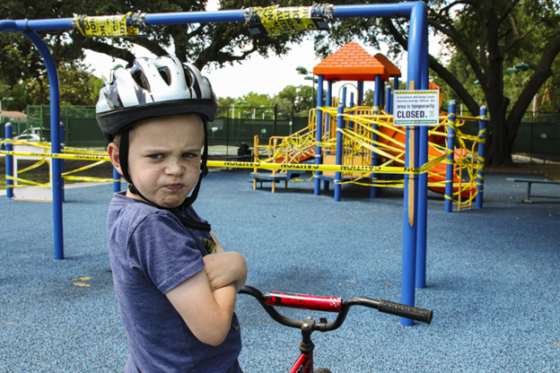Supporting Your Stepchildren Through Emotional Ups And Downs: A Guide For Stepdads
Practical Strategies for Stepdads to Help Their Kids Navigate Emotions and Build Resilience

One of the toughest challenges of childhood is learning to cope with disappointment. As adults, we’ve had our share of ups and downs, but every setback feels like the worst for kids. Their limited perspective makes it hard to understand that things will get better.
So when your nine-year-old stepson comes home furious about a recess snub or your teenager is seething after being benched for a game, it’s easy to feel overwhelmed as you try to help them process their emotions.
As parents, we’re responsible for modeling emotional regulation, but how do we strike the right balance? How do we validate their feelings without forcing positivity – especially with teenagers, who are likely to resist that approach? It may feel like walking a tightrope, but the good news is that with the right balance, you can help them navigate these emotional moments without them falling into unhealthy reactions.

1. Validate First, Guide Second
When your stepchild is overwhelmed with frustration, sadness, or anger, the first step is acknowledging their feelings.
Instead of saying, “It’s not a big deal,” or “You’ll get over it,” try something like, “I understand why that upset you,” or “That sounds really frustrating.” When kids feel heard, they’re more likely to listen when you guide them toward a solution.
The goal isn’t to suppress these emotions but to help them express them constructively. Let them know it’s okay to feel angry, but it’s not OK to lash out at others. It’s OK to be sad, but they don’t need to stay stuck in that sadness. Separating feelings from actions helps them regain control over their reactions.
2. Stay Calm and Model Emotional Control
Kids, especially stepkids who are still building trust with you, pay close attention to how you respond in emotional situations. If you react to their frustration with anger or impatience, they may learn that emotions should be met with more emotions rather than calm problem-solving.
Please take a deep breath before responding, and show them that feelings don’t have to control actions. When they see you stay steady, they’ll learn self-regulation. And remember: no yelling. Yelling only escalates negative emotions and makes it harder for everyone to remain calm.
3. Help Them Find Healthy Outlets
Every child processes emotions differently. Some kids need to talk things out, while others need to move – whether through sports, running, or even walking. Others might turn to writing or creative activities as a release. Please pay attention to your stepchild’s preferred processing methods and encourage them to use those outlets when they need to decompress. By providing tools for handling emotions now, you’re helping them avoid unhealthy coping strategies in the future.
You can also model this by sharing what works for you. They might want you to join in, or they might prefer to be alone. Either way, respect their boundaries and encourage them to process their feelings constructively.
4. Encourage Empathy Through Perspective
When kids are upset, their world often shrinks to their feelings. In those moments, frustration, anger, or sadness can feel overwhelming, making it difficult for them to consider others’ points of view.
Ask open-ended questions like, “Why do you think your friend acted that way?” or “What do you think your coach was trying to teach you?” These questions encourage them to pause, reflect, and think critically about the situation. As they start considering other perspectives, they develop empathy, which helps them navigate relationships with more emotional maturity.
Remember, kids won’t always come to the correct conclusions immediately. They might insist their friend was being mean or their coach was unfair. That’s okay. The goal is to plant the seed of perspective-taking. Over time, they’ll begin to see situations from different angles naturally.
This helps them build empathy and teaches them that everyone has their own emotions, motivations, and challenges. Instead of reacting impulsively, they’ll start responding thoughtfully, an invaluable skill for building strong relationships.
5. Avoid Forced Positivity
When kids are struggling, saying things like, “Look on the bright side” or “It could be worse ” can be tempting.” While well-meaning, these phrases can feel dismissive. Instead, acknowledge their feelings and help them see the bigger picture without minimizing their emotions. For example, “This is tough, but I know you’ll get through it” reassures them while respecting their emotional experience.
6. Teach Mistakes are for Learning
If your stepchild is devastated over a bad grade, a lost game, or a mistake, help them reframe it as a learning opportunity. Ask, “What can you do differently next time?” or “What did you learn from this?” This helps them see failure as a stepping stone to success rather than something to be feared or avoided.
7. Be the Steady Presence They Need
Emotional regulation isn’t something kids master overnight. It’s a long-term process that requires guidance, practice, and patience. As a stepfather, your role isn’t to solve every emotional challenge but to be a steady, supportive presence.
How do you handle emotional moments with your stepkids? Share your thoughts in the comments! Check out the Support for Stepdads blog for more support on being your best stepfather. This post is part of our series on The Stepdad’s Toolbox: Practical Parenting Strategies For The Everyday Life. Check out some other posts, like Communication Is Key: Building Trust With Your Kids and Mastering Morning Routines: From Chaos To Calm!





